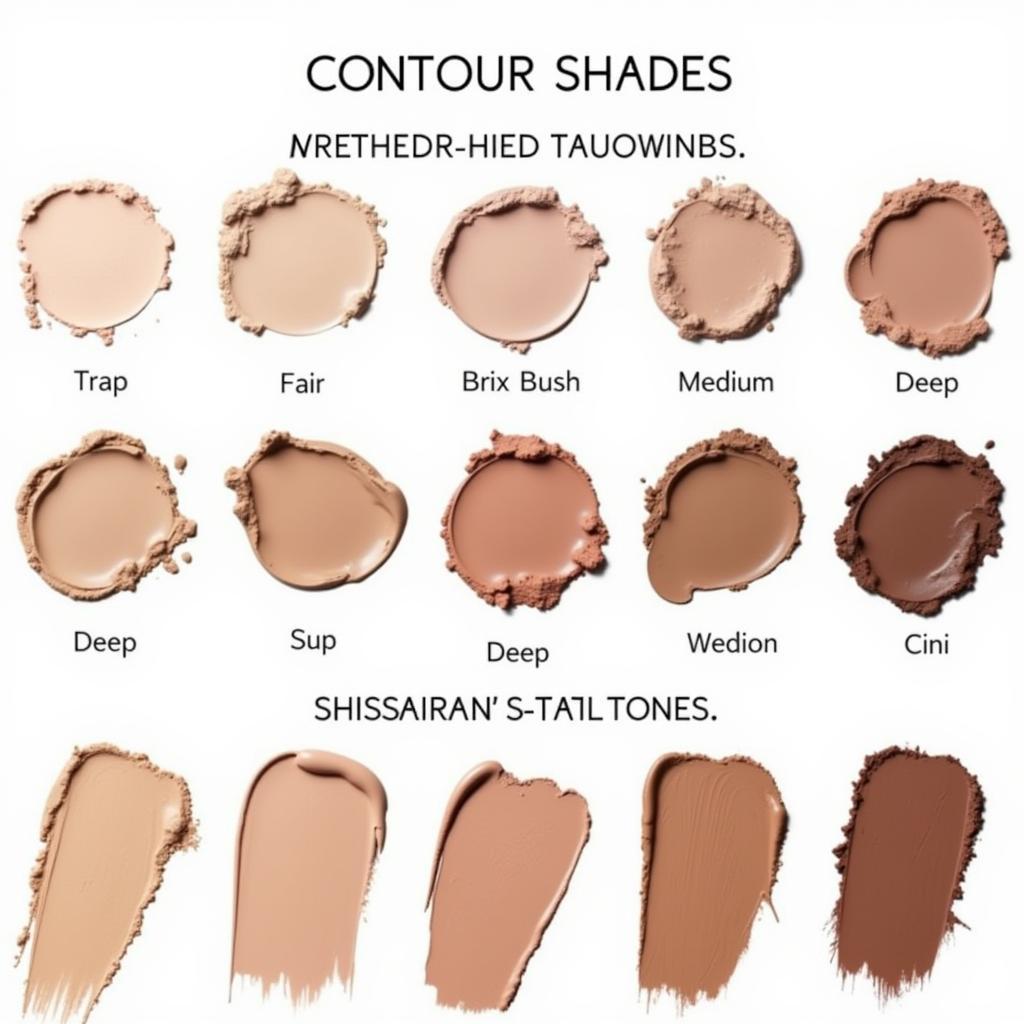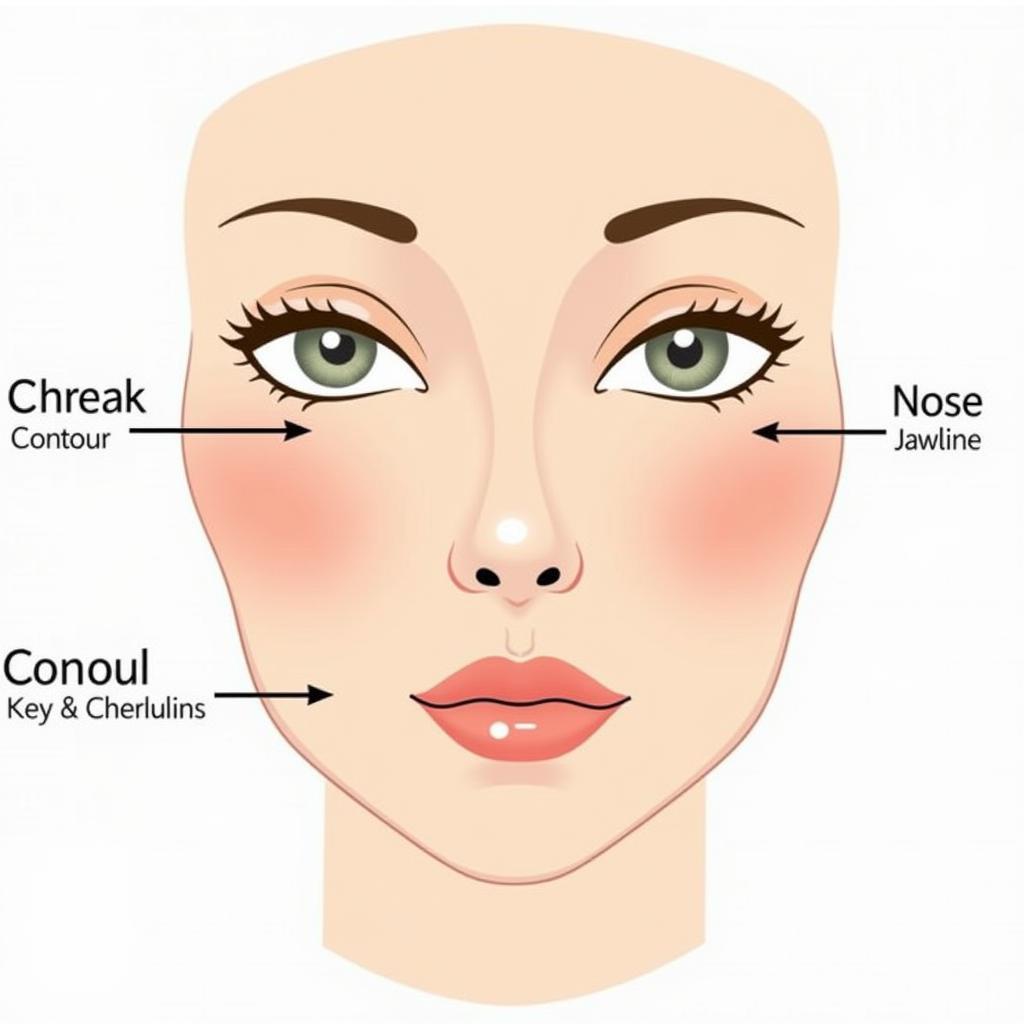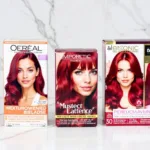Choosing the right contour shade can be the difference between a subtle sculpt and a harsh, unnatural look. It’s all about creating shadows and dimension that enhance your natural features, not mask them. So, What Color Should Contour Be? This comprehensive guide will delve into the intricacies of contouring, helping you find the perfect shade for your skin tone and desired effect. Let’s unlock the secrets to a perfectly contoured complexion.
Finding the right contour shade hinges on understanding your skin’s undertones. Are you cool, warm, or neutral? This what color should my contour be guide will walk you through the process. Once you’ve identified your undertone, choosing a contour becomes much simpler. For cool undertones, contour shades with a slightly pink or taupe base work best. Warm undertones are complemented by golden or olive-toned contours. And for neutral undertones, a balanced shade that’s neither too warm nor too cool is ideal.
Understanding the Purpose of Contour
Contouring isn’t about creating stripes on your face. It’s about subtly reshaping and defining your features. A well-placed contour can slim down a wide nose, create the illusion of higher cheekbones, or even sharpen a jawline. But the key is choosing the right shade. Too dark, and you risk a muddy or artificial look. Too light, and it won’t create enough definition.
Choosing the Right Contour Shade for Your Skin Tone
This is where the magic happens! Matching your contour shade to your skin tone is crucial for a natural-looking result.
-
Fair Skin: Opt for contour shades that are one to two shades deeper than your foundation. Look for cool-toned taupes or light browns. Avoid anything too orange or red-toned.
-
Medium Skin: You have a bit more flexibility. Medium skin tones can pull off both cool and warm-toned contours. Experiment with shades that are two to three shades deeper than your foundation. Golden browns, olive tones, and richer taupes can all work beautifully.
-
Deep Skin: Choose contour shades that are three to four shades deeper than your foundation. Rich browns, deep reds, and even some bronzes can create a stunning sculpted look.
 Contour Shades for Fair, Medium and Deep Skin Tones
Contour Shades for Fair, Medium and Deep Skin Tones
Different Contour Products
The type of contour product you choose can also affect the final look. Powders are great for beginners, offering buildable coverage and easy blending. Creams and sticks offer more intense pigmentation and a dewy finish, ideal for dry skin. And liquids provide a seamless, skin-like finish, perfect for those who prefer a natural look. Learn more about choosing the right product type in this guide: what color contour should i get.
Application Techniques
The placement of your contour is just as important as the color. For cheekbones, start by sucking in your cheeks and applying the contour in the hollows. Blend upwards towards your temples. To slim down your nose, apply the contour along the sides of the bridge and blend carefully. And for a sharper jawline, apply the contour along the jawbone and blend downwards towards your neck. For a more in depth guide on matching your entire makeup look, see how to color match seint makeup.
 Contour Application Techniques for Cheekbones, Nose, and Jawline
Contour Application Techniques for Cheekbones, Nose, and Jawline
Common Contour Mistakes to Avoid
- Using a shade that’s too dark: This can result in a muddy, unnatural look.
- Not blending properly: Harsh lines and uneven application are a dead giveaway.
- Applying too much product: Start with a small amount and build up gradually.
- Contouring in the wrong places: Focus on the areas you want to define, not every inch of your face.
“The perfect contour enhances, it doesn’t mask. It should create a subtle play of light and shadow, not a stark contrast,” says renowned makeup artist, Amelia Dubois.
Conclusion
Choosing the right contour color is essential for achieving a naturally sculpted look. By understanding your skin tone, choosing the right product, and mastering the application techniques, you can create a flawless, defined complexion. Remember, the goal is to enhance your natural beauty, not create a dramatic transformation. So, find your perfect shade and embrace the power of contour! Don’t forget to explore other complementary makeup choices like blush, discussed in what color of blush should i use, and setting powder, covered in what color should your setting powder be, to complete your look.
FAQ
- Can I use bronzer as contour? Bronzer is designed to add warmth, while contour is meant to create shadows. While they can sometimes be used interchangeably, using a true contour shade will give you more defined results.
- How do I know if my undertone is cool, warm, or neutral? Look at the veins in your wrist. Blue or purple veins indicate a cool undertone, green veins suggest a warm undertone, and blue-green veins point to a neutral undertone.
- What type of brush should I use for contour? An angled brush is ideal for precise application and blending.
- Can I contour every day? Absolutely! Contouring can be as subtle or dramatic as you like. For everyday looks, opt for a lighter hand and a well-blended finish.
- What if I can’t find a contour shade that matches my skin tone? Try mixing two shades together to create a custom match.
“Contouring is like sculpting with makeup. It’s about understanding the shapes of your face and using light and shadow to create dimension,” adds celebrity makeup artist, David Chen.
Common Contour Questions:
-
My contour looks muddy. What am I doing wrong? You might be using a shade that’s too warm or too dark for your skin tone. Try a cooler, lighter shade and focus on blending thoroughly.
-
I can’t see my contour even after applying it. What should I do? The shade might be too light or you’re not applying enough product. Build up the intensity gradually until you achieve the desired definition.
More to Explore:
Explore other articles on our website related to makeup application techniques and product recommendations.
Need help?
Contact us at 0373298888 or email [email protected]. Visit us at 86 Cầu Giấy, Hà Nội. We offer 24/7 customer support.
